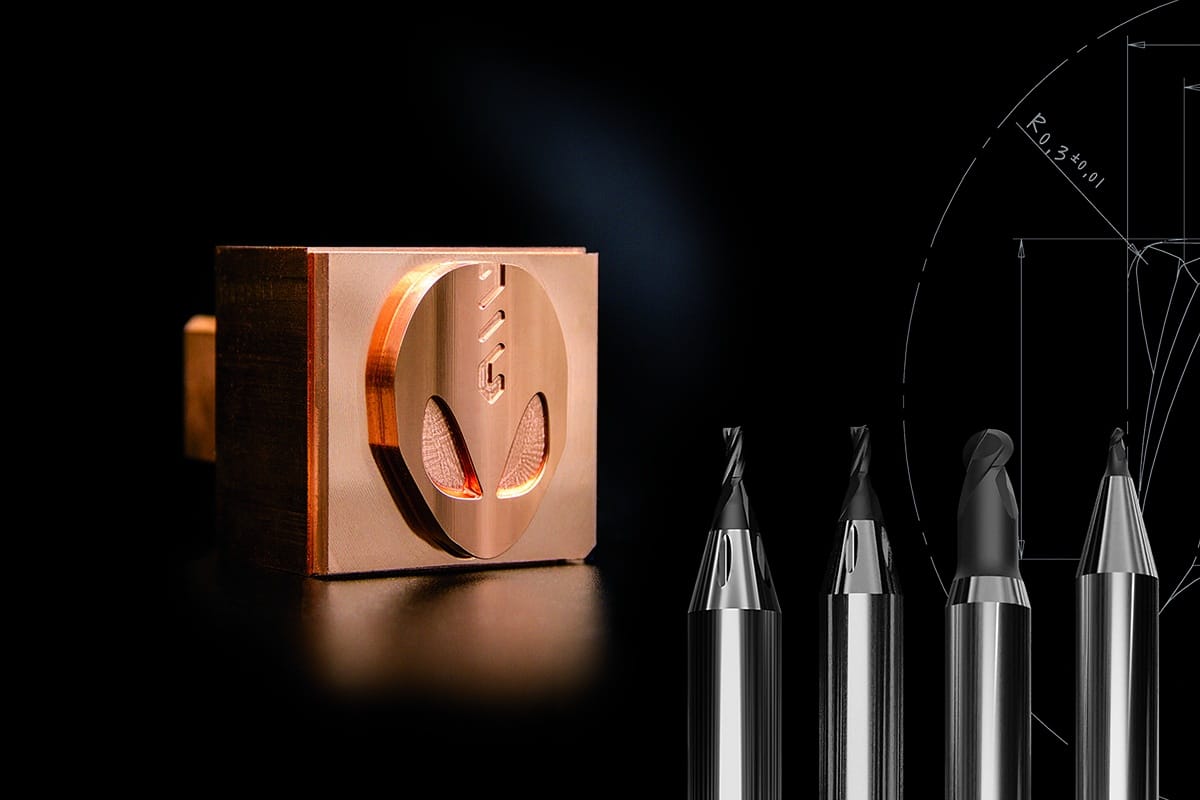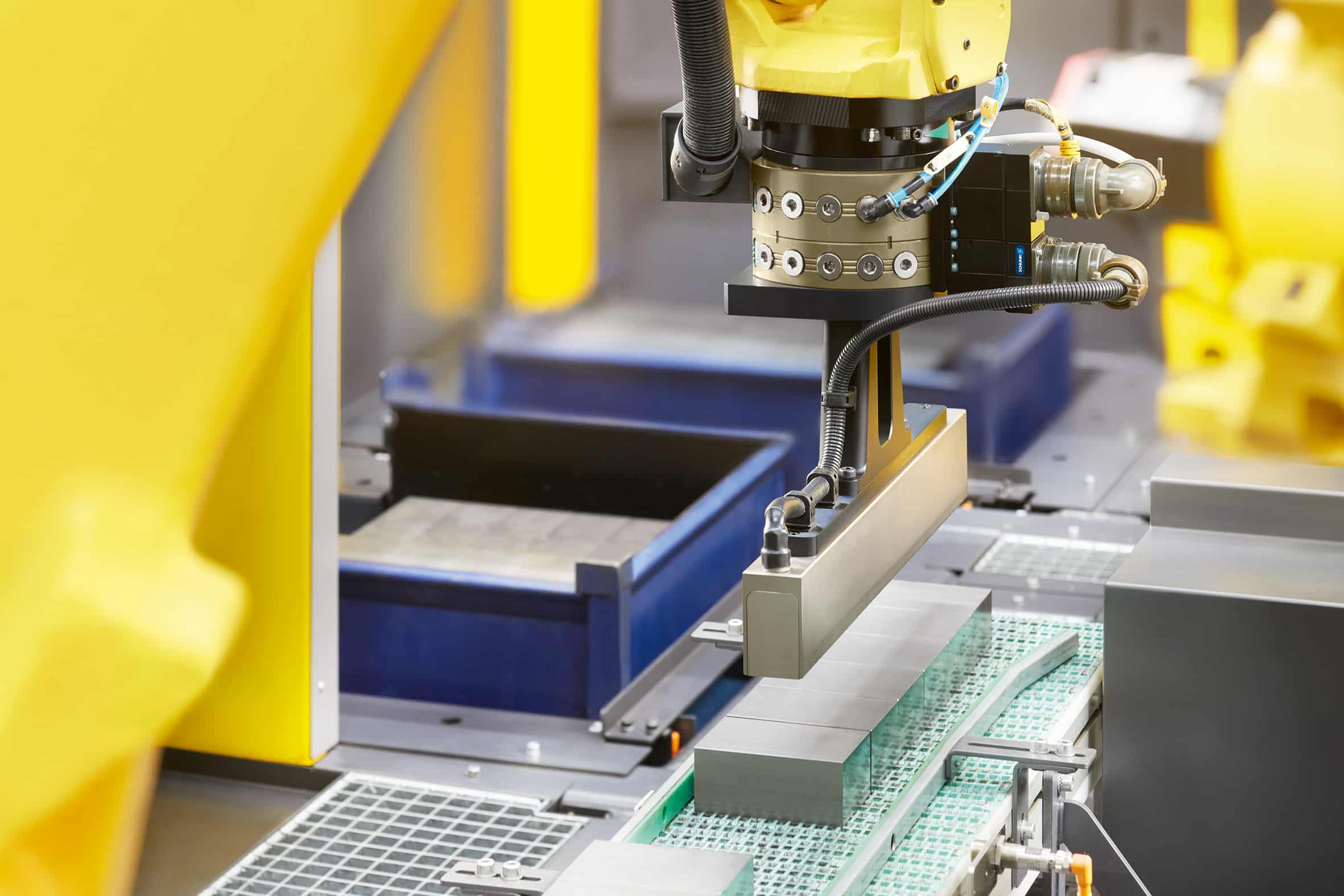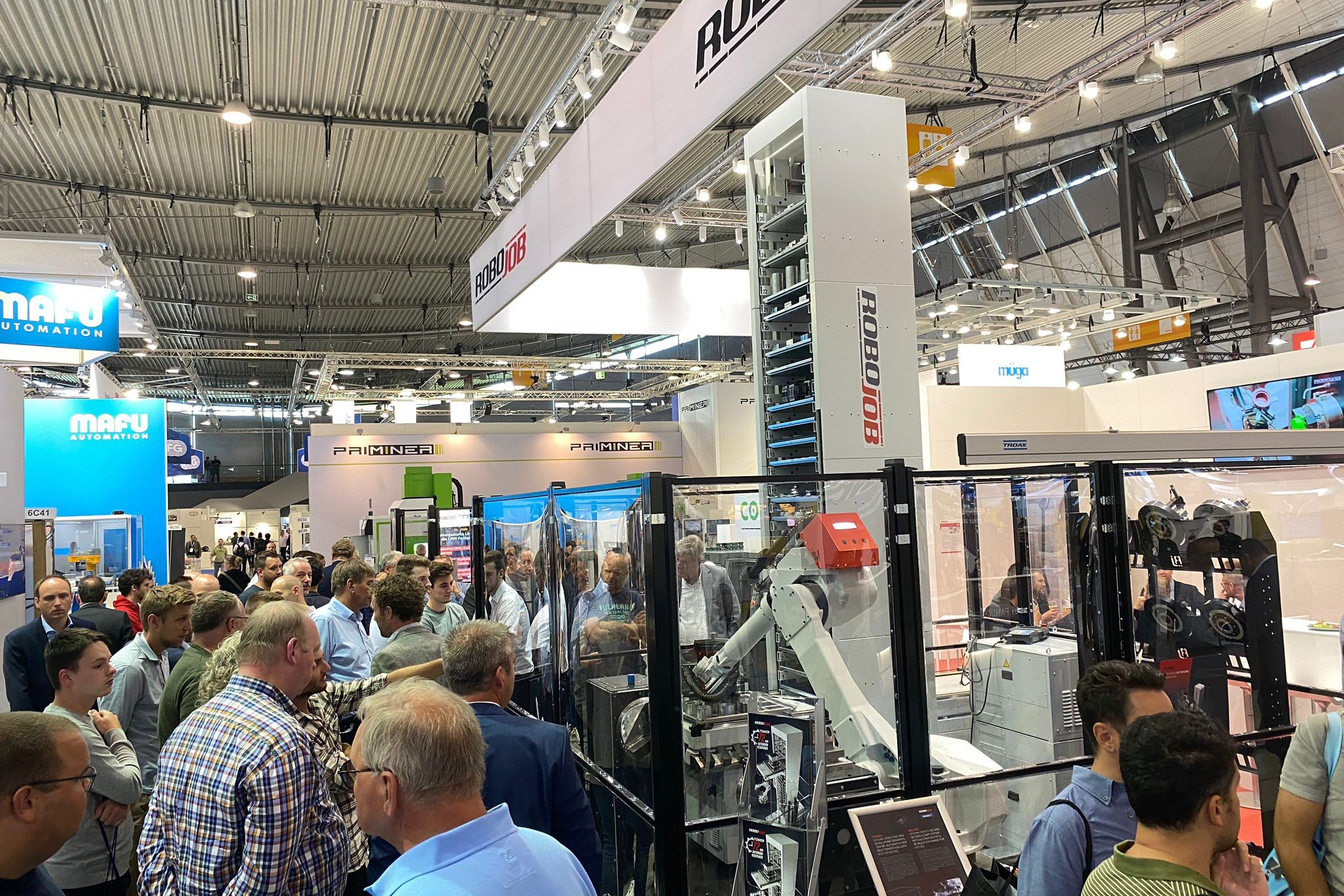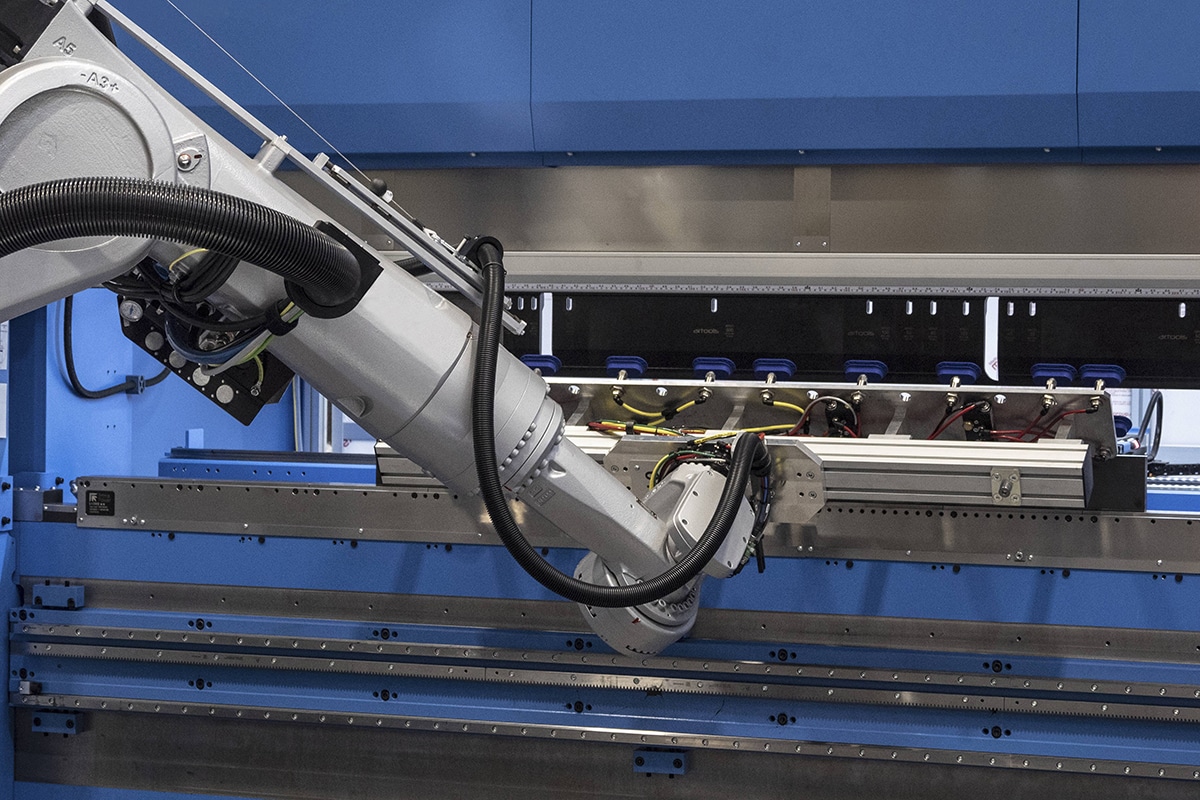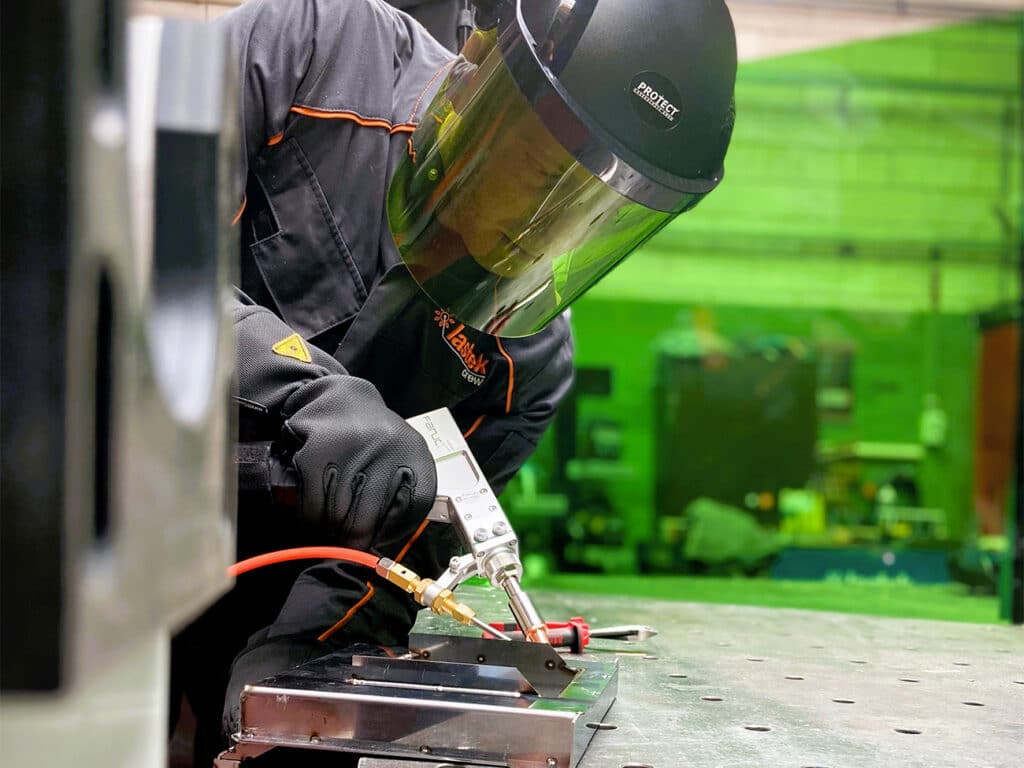
Safety first, also with manual laser welding
The benefits of laser welding have been known for some time. Now we have succeeded in incorporating the technology into handheld devices. That opens up an extraordinary number of possibilities. Not least to lower the threshold to welding. But low heat generation and speed of operation are also important advantages to point out. But as with any new process, we must also pay attention to the safety measures required. Lastek has just finished a report that compiles globally gathered knowledge around this topic. From today it can be downloaded for free on their website. Just a taste of the main points of interest.
Fanuci's devices translate laser welding into everyday practice in welding shops. After all, by combining the power of laser welding in a hand-held unit, the technique can now be adopted on a much larger scale. Lastek is exclusive distributor for Fanuci for the Benelux market. "A market where the scarcity of experienced welders plays very hard. With the introduction of this technology we want to support our customers to be able to do more with less. Because the quality that these devices deliver is impeccable and in combination with the time savings that can be achieved is therefore very interesting," summarizes Peter Boodts of Lastek.

Security measures mapped
Lastek not only takes care of the necessary training and service with the devices themselves, but also the safety measures required.
"Every process has certain requirements to get started safely, for the welder himself and for the people working in the area. The challenge for hand-held laser welding is that the legal framework is spread across different standards, such as EN60825 and EN207, and does not always state what applies to hand-held laser welding. We therefore set to work ourselves to tease out globally applicable recommendations and turn them into one clear document with all guidelines for our customers. A necessity, because the impact of exposure to laser light can have serious consequences. Handheld devices usually involve a fiber laser source, which is in the most hazardous class. It is not for nothing that fiber laser cutting machines come with a full enclosure with a special filtered window," warns Boodts.
Specific eye protection a must
The result is a report that summarizes key safety regulations and will be continuously updated as new insights emerge.
There is a division into two parts: what is needed for the welder, and what is needed for the environment. Boodts: "Laser welding requires eye protection in the first place. After all, part of the laser light is in the spectrum that is invisible to the human eye, but can nevertheless cause blindness with only a fraction of exposure. Damage that is, moreover, irreversible."
Depending on the laser source, the spectrum, expressed in nanometers, differs and thus the CE-compliant laser safety glasses must be chosen. These must state the optical density (OD) and damage threshold (LB) according to EN207. "In addition, as with a safety helmet, keep in mind the lifetime of the glasses. Replace them according to the manufacturer's specifications."
The laser light can damage not only the eye but also the skin. So protective clothing is a must. "Welding clothing suitable for arc welding lends itself equally well to laser welding."
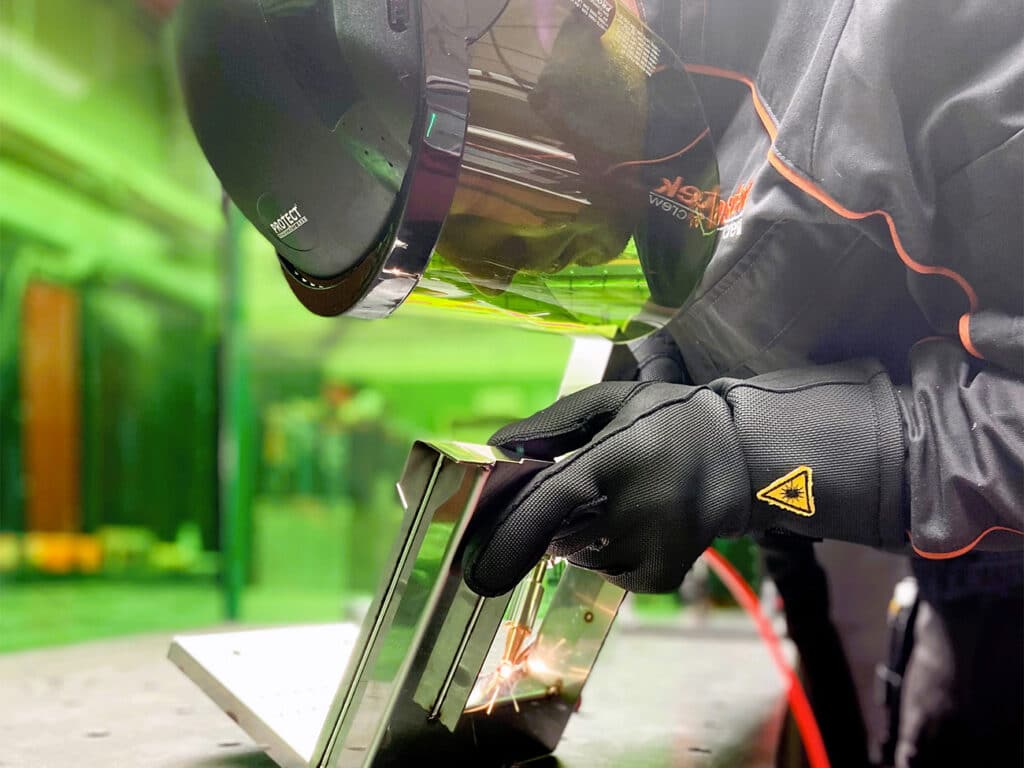
Risk analysis of the environment
The workpiece will absorb only part of the laser light; the rest will be reflected into space.
"A risk analysis will determine how the laser waves will travel through a specific room. The height of the ceiling, the mattness of the paint, the materials used, the roughness of the surface ... are all parameters that influence how far the reflected laser wave reaches. An audit of the working environment is therefore recommended. Of course, the ideal scenario is to have laser welding done in an enclosed area, where special signs warn everyone of the potential danger of laser waves, so that one does not enter the area without personal protection. Also avoid viewing from the office or from landings, or - if there is one - make sure there are special filters or shutters."
"Finally, users must have adequate knowledge and remain vigilant. If the laser welding gun ever falls out of your hands, report it to the person in charge. After all, if the orientation of the mirrors in the laser welding gun changes, this can have far-reaching consequences. Make sure everyone also knows perfectly well what to do if an incident should occur. The sooner the victim gets to an ophthalmologist, the better," Boodts said.
Providing advice and assistance
So is the investment in laser welding still worthwhile, with all these safety protocols? Boodts: "There are specific safety measures for each welding process. It is a matter of making everyone aware of the dangers and providing the right protection, for the welder and in the workshop. In principle, there is not that much difference with other welding processes. But the advantages in terms of time and quality savings and especially the low entry threshold really make laser welding the answer to many of the challenges facing welding companies."
Lastek has expanded its offerings to include everything needed to achieve that goal. From different laser welding glasses to fixed or movable laser welding screens in different qualities, from the right gloves to respiratory protection with adapted eye protection. "But above all, we want to support our customers with the necessary expertise around this. For all questions related to safety, they can come to us. On our website you can also download a report that bundles all the knowledge around this."
